Dice, like any other things, evolved through time. Unlike before, when things serve an essential purpose, and there are only six-sided dices on the game table, games in the 21st century will extremely beg to differ. These days, night out or gatherings with family and friends will surely never go off with a bit of fun and games.
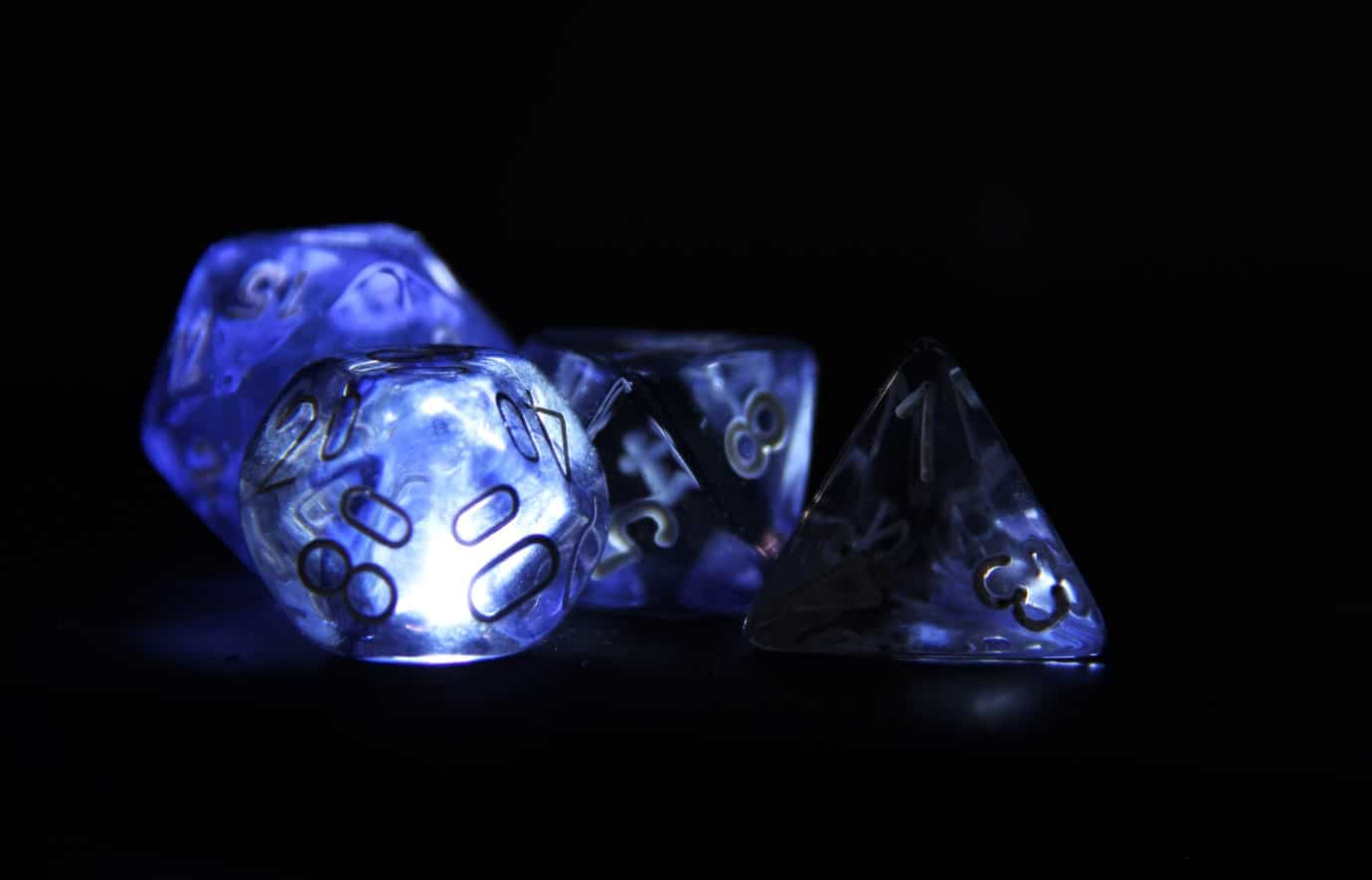
If you ever happen to stumble on a board game that requires percentile dice, you might find yourself in a pinch, especially when you have no idea how to read and roll these dice. And no game is ever fun when things are confusing for you, isn’t it?
Although this tutorial will help you understand how percentile dice work, keep in mind that we will still have to leave the game’s odds to lady luck! Are you ready? Settle down on your game tables, get comfortable and let’s all start rollin’!
What is a percentile dice?
Before we move forward to our tutorial, it is crucial to know the “what” before the “how,” of course, on that note, let’s all ask and seek the answer for the question: what is a percentile dice?
A percentile dice is a pair of ten-sided dice rolled to get a percentage of one hundred. These kinds of dice are often used for role-playing games. The first percentile die was known way back in 1963 when the US Naval War College used them in war games to simulate the chances of using a 20-sided die marked 0-9 twice, which should be rolled twice to generate two digits.
In 1974, Gygax used them as twenty-sided dice in the Original Dungeons & Dragons, reading it as 1-20. It was customary to color half the numbers with crayons back then as 0-10 and the uncolored ones as 0-20. Reading a die as 1-10 was not an idea until in 1975 Greyhawk.
The spindle-shaped dice are newer versions; in the AS&D 1e Dungeon Master’s Guide in 1979, it is expected that people should use the d20 as a d10 and then created a new non-platonic actual d10 marked as 0-9. The newer d10 versions were marked as 1-10, and the d10 that are marked as 10-90 for percentage use is technically inventions made later on.
How to read d100 roll?
Percentile dice work a little differently among other dice out there. There are two dice rolled in each turn, and one of these dice will determine the 10’s (tens) value while the other one will determine the value of the 1’s (ones.)
Since two dice will determine your roll’s value, the odds of your luck when you land upon the 00 on the 10’s value will be determined by the single-digit die as it can either result in the highest value roll or the lowest one.
If you match the 00 with another 0 on the 1’s value, this automatically results in 100. Otherwise, the rolling result in low-value ones such as 1-9%.
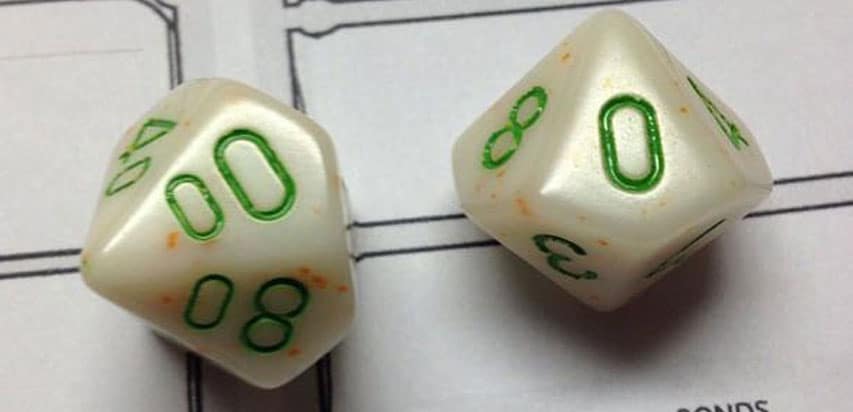
What are percentile dice used for?
Just like what I’ve mentioned earlier, percentile dices are often used in role-playing games. They are used to determine the level of skills the players use. For example, you are playing a sword and magic centered role-play board game with your friends, and you roll up on 60 and 3 dice, your character’s skill will be worth 63%, if your friends aim defense, they will either have to get a roll of 00 and 0 or a roll with a higher value than 63% to go against you.
Given that role-playing game characters have lots of skills with them, leaving the strength and weakness of your attack and defense on your roll with a huge trust that lady luck grants you her blessing sounds fun and challenging, right?
How to roll and read percentile dice?
On the previous pages, I’ve taught you a few things about the percentile dice. Now that you already know them, you must already have an idea why learning how these dice work is crucial for you as a player.
This time I’ll give you a few ideas on how you’ll read the result of your percentile dice so you can go ahead and roll your way to the top of your game! Ready? Let’s go!
How to roll d100 with 2d10
The 2d10 dice is a pair of 10-sided dice that are respectively marked by 10’s and 1’s value. These are the dice that you have to roll and add up to gain your result, just like the examples I’ve previously mentioned here.
Usually, you read 2d10 dice in this manner.
Step 1
Roll the dice. Just simply toss your dice in the board and wait for the odds lady luck has granted you.
Step 2
Look at the 10’s value dice first. Since we’re talking about percentages here, have your tens value counted first, you can try and count the ones first, but this method makes things more systematic and less confusing.
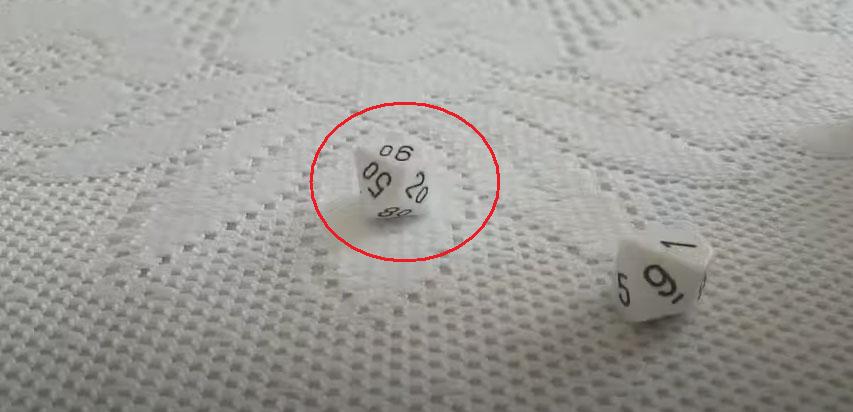
Step 3
Look at the 1’s value.
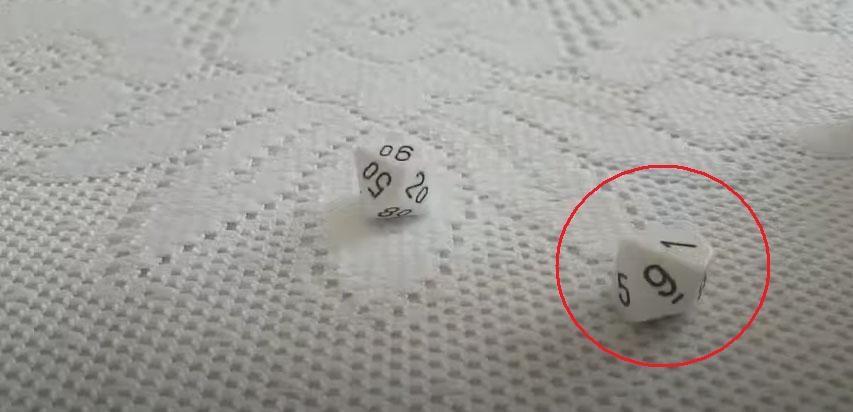
Step 4
Add up the result of 1’s and 10’s for your final roll value. After taking a good look at the values of your 10’s and 1’s dice, you just have to add them up to come up with your roll value.
However, having to play with so much pressure and the fact that you still have to add up results in your mind sounds like a pain, right? Most of the time, when things just get high on the game table, we could get the hype up and has the tendency to mess up with the addition. Thus, I’ll give you a more efficient alternative than the usual way of reading percentile dice.
Table with rolls
If you’re very particular about the game’s efficiency, this reading is undoubtedly the one for you. It’s easy and makes the rolls’ results be determined faster without imposing further pressure on you or the other players.
In this manner, you only have to do the following.
Step 1
Create a table. This table of values can be written or printed. That’s up to you. However, if you seek perfection on the lines and alignment of figures to make it more pleasing to the eye, you might want to have this table computerized.
Step 2
Type all the roll values in the table. I suggest that you do this in chronological order, so it looks more systematic, appropriate, and easier to figure out. Start with a roll of 00 and 1, for example, which will result in a roll value of 1 and so on. You can use the table below for example.
| 10’s die roll | 1’s die roll | Roll value |
| 00 | 1 | 1 |
| 00 | 2 | 2 |
Step 3
Just have fun rolling the dice and look up into the table for your result after that. Is nothing more effortless than just looking it up on a piece of paper to see your roll value right on the spot without overthinking and disrupting your focus on the game, right?
Reading 0, 10, and 100 on percentile dice
One of the most confusing parts of reading percentile rolls is reading the values of 0, 10, and 100. This is an essential thing to remember, but somehow, the percentile dice notation can play tricks and confuse people with the values. On that note, this is how you read rolls with values as mentioned above.
| 10’s die roll | 1’s die roll | Roll value |
| 00 | 1 | 1 |
| 10 | 0 | 10 |
| 00 | 0 | 100 |
Although I’ve given this roll value table so you could just remember it in your head, I have another tip for you to quickly determine whether the value of your roll landed on 1, 10, or 100.
Singles before tens
In this type of reading, you simply just have to take the one’s die value into count first before you proceed to the die with the value of tens, regardless of how many zeros you have on either die.
For example, you roll into the following odds:
Ones-digit dice die roll value: 1
Tens-digit dice roll value: 00
1 + 00 = 1
Ones-digit dice roll value: 0
Tens-digit dice roll value: 10
0 + 10 = 10
Ignoring the zeros
This method will work effectively on the rolls mentioned above. In the case of the tens and ones die roll value landing on three complete zeros, it’s just a simple thing to remember that this is an automatic win of 100 and not an unfortunate roll value of 0.
Then you have to ignore all the zeros you have and do it as below:
Single-digit die roll value: 0
Double-digit die roll value: 00
0 + 00 = 100
Reading a d100 dice roll
Reading a d100 dice roll is different from reading 2d10. A d100 is a golf-sized die marked from 1-100, while you have to toss and add up to know a dice roll value in a 2d10, you just simply have to roll a d100 and carry on with your game, as it gives off a direct roll value after your toss.
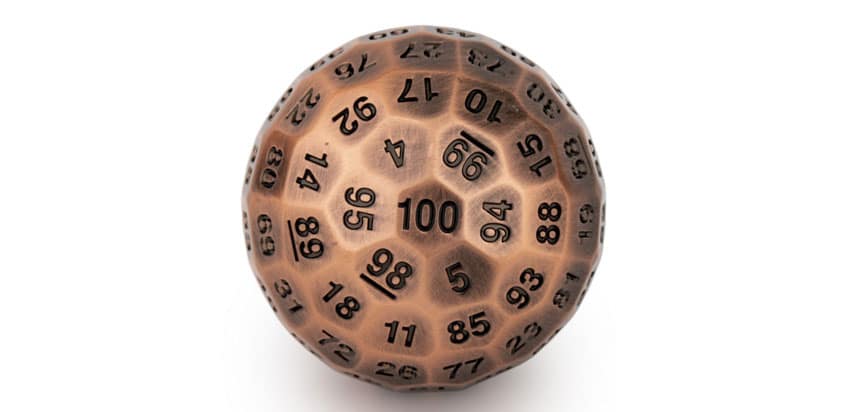
Although the numbers might be printed a little smaller than those of a regular die, this gives you the convenience from having to add up roll values in the middle of a heated game.
d100 vs. 2d10
I’ll say that d100 is easier to use than a 2d10 dice, making it the better one. Like I said earlier, it’s more convenient to use because you can just have the roll values right up instead of going into additions of values when you use a 2d10.
When you’re in the middle of the game, it’s a reality that you want to keep everyone’s hype going, and that can be disrupted when you take pauses to add things up or take your time to look for the value of your roll on the table provided.
Conclusion
So, did you enjoy our tutorial? I hope that you find this genuinely informative and helpful. Now that you have learned everything you need to know about rolling percentile dice and reading their values, it’s now up to you to keep the fun going in your next game night with the family and friends.
And although we’ve already given you what you need, keep it in mind that the best games you could have are not just the ones that you have complete mastery of, but those whom you’ve poured your heart and flourished your happiness with others.
Let us hear your thoughts in the comment section below, and don’t forget to share this with your friends and loved ones if you find this helpful and worthy of reading. Until the next game!